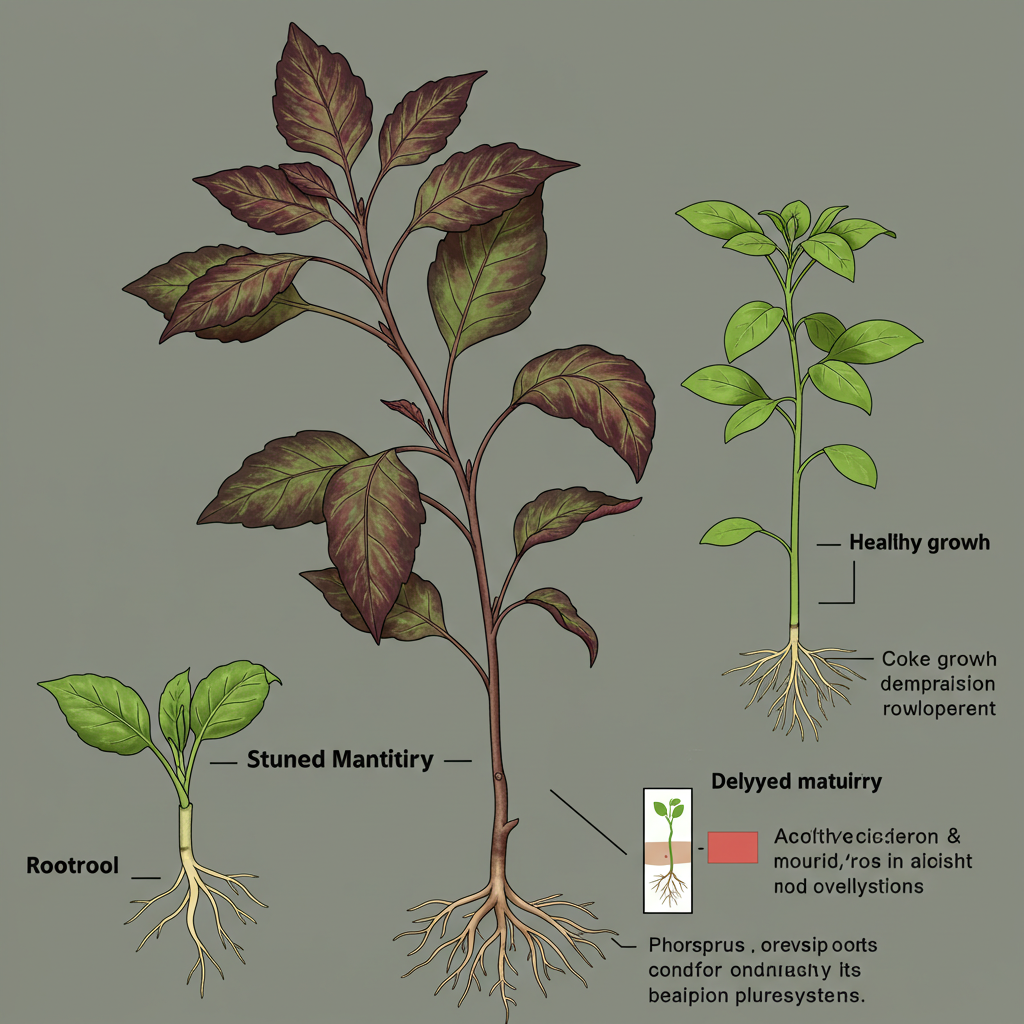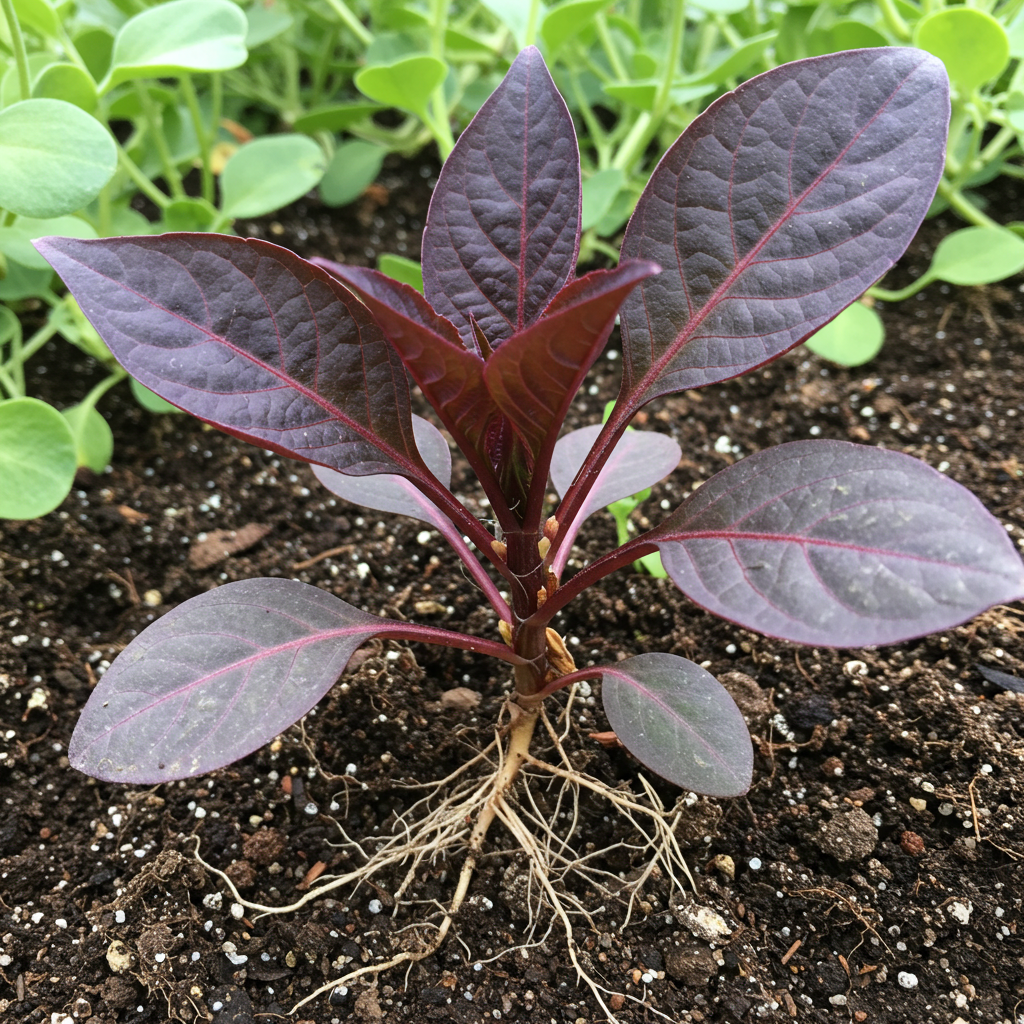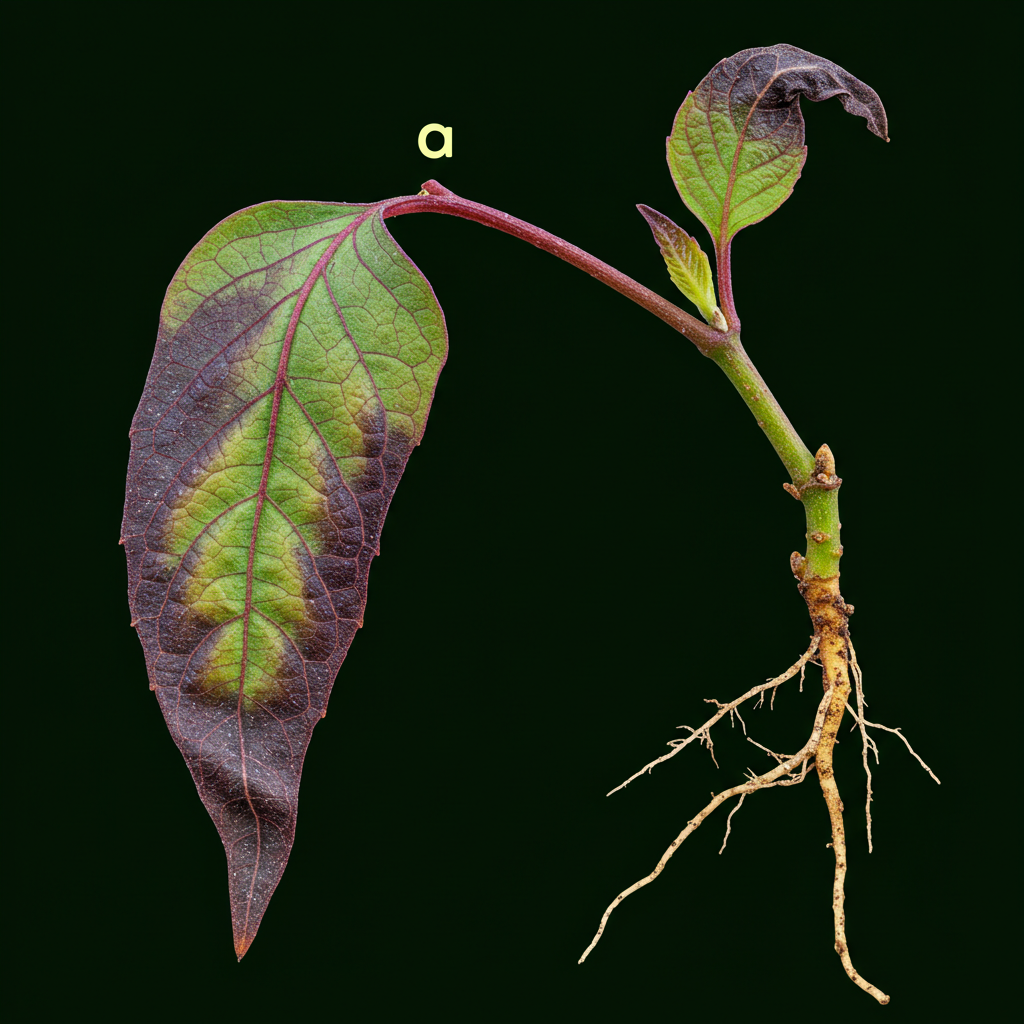NOVENZA
WHAT IS PHOSPHORUS (P)? WHAT DOES IT DO, WHAT HAPPENS IN ITS DEFICIENCY, AND HOW IS IT DETECTED?
The Cornerstone of Plant Life
The Importance of Phosphorus in Plants
Phosphorus (P) is one of the three most essential macronutrients for plants, alongside nitrogen (N) and potassium (K). It plays a vital role in the healthy growth, development, and reproduction of plants. Phosphorus is indispensable for critical functions such as energy transfer, genetic material structure, cell division, and root development. Adequate phosphorus uptake ensures stronger, healthier, and more productive plants.
Key Functions of Phosphorus in Plants
- Energy Transfer: Phosphorus is a key component of energy-carrying molecules like adenosine triphosphate (ATP) and adenosine diphosphate (ADP).
- Genetic Material Structure: Phosphorus is present in deoxyribonucleic acid (DNA) and ribonucleic acid (RNA), which are essential for genetic material.
- Cell Division and Growth: Phosphorus is necessary for the formation of new cells and the growth of plant tissues.
- Root Development: Phosphorus promotes the development of a healthy and robust root system.
- Flowering and Fruit Formation: Phosphorus plays a significant role in flower bud formation, flowering, and fruit development.
- Seed Formation: Phosphorus is essential for the formation of healthy and viable seeds.
- Disease Resistance: Adequate phosphorus levels can enhance plants' resistance to certain diseases.
- Maturation: Phosphorus contributes to timely and proper plant maturation.
What Happens in Phosphorus Deficiency?
Although phosphorus is a mobile element within plants, deficiency symptoms often develop slowly and can affect the entire plant. In cases of deficiency, phosphorus is preferentially transported to younger, actively growing parts, so symptoms typically become more pronounced in older leaves.
- Stunted Growth: Overall plant growth slows, and plants remain stunted.
- Leaf Color Changes: Abnormal coloration may occur in leaves. Typically, purple or reddish hues become noticeable on the undersides and veins of older leaves.
- Weak Root Development: The root system remains weak and underdeveloped.
- Reduced Flowering and Fruit Formation: Flower bud formation decreases, flowering may be delayed, and fruit set is reduced.
- Leaf Drop: In severe deficiencies, older leaves may yellow, turn brown, and drop prematurely.
- Purple Discoloration in Stems and Petioles: Stems and leaf petioles may also show purple or reddish discoloration.
- Delayed Maturation: The plant's maturation process may be prolonged.

Example Image: A leaf with phosphorus deficiency showing purpling and color change.
How to Detect Phosphorus Deficiency?
Careful observation of visual symptoms in plants is crucial for identifying phosphorus deficiency:
- Leaf Color: Purple or reddish discoloration, particularly in older leaves, is one of the most typical symptoms.
- Growth Rate: Slow overall growth and a tendency to remain stunted.
- Root Development: Uprooting the plant to check the root system may reveal weak root development.
- Flowering and Fruit Status: Fewer flowers, delayed flowering, and reduced fruit set.
- Condition of Older Leaves: Yellowing, browning, and premature leaf drop in older leaves (in advanced stages).
- Soil Testing: The most accurate method to determine phosphorus levels in the soil.
- Leaf Analysis: Laboratory analysis of leaf samples taken from the plant.
Distinctive Features of Phosphorus Deficiency
- Purple or Reddish Discoloration: Particularly noticeable on the undersides and veins of older leaves.
- Stunted Growth and Dwarfing: Significant slowing of overall plant growth and a tendency to remain stunted.
- Starts in Older Leaves: Symptoms typically appear first in the older leaves at the base of the plant.
Visual Symptoms
The following characteristics are observed in a plant leaf with phosphorus deficiency:
- Purpling or Redness: Especially on the undersides, veins, and sometimes leaf edges of older leaves.
- Dark Green or Bluish Leaves: In some cases, leaves may appear darker than normal.
- Smaller Leaves: Newly formed leaves may be smaller than usual.
- Weak Root Development: A root system disproportionately weak compared to the above-ground parts.


Example Image: A leaf with phosphorus deficiency showing purpling and color change.